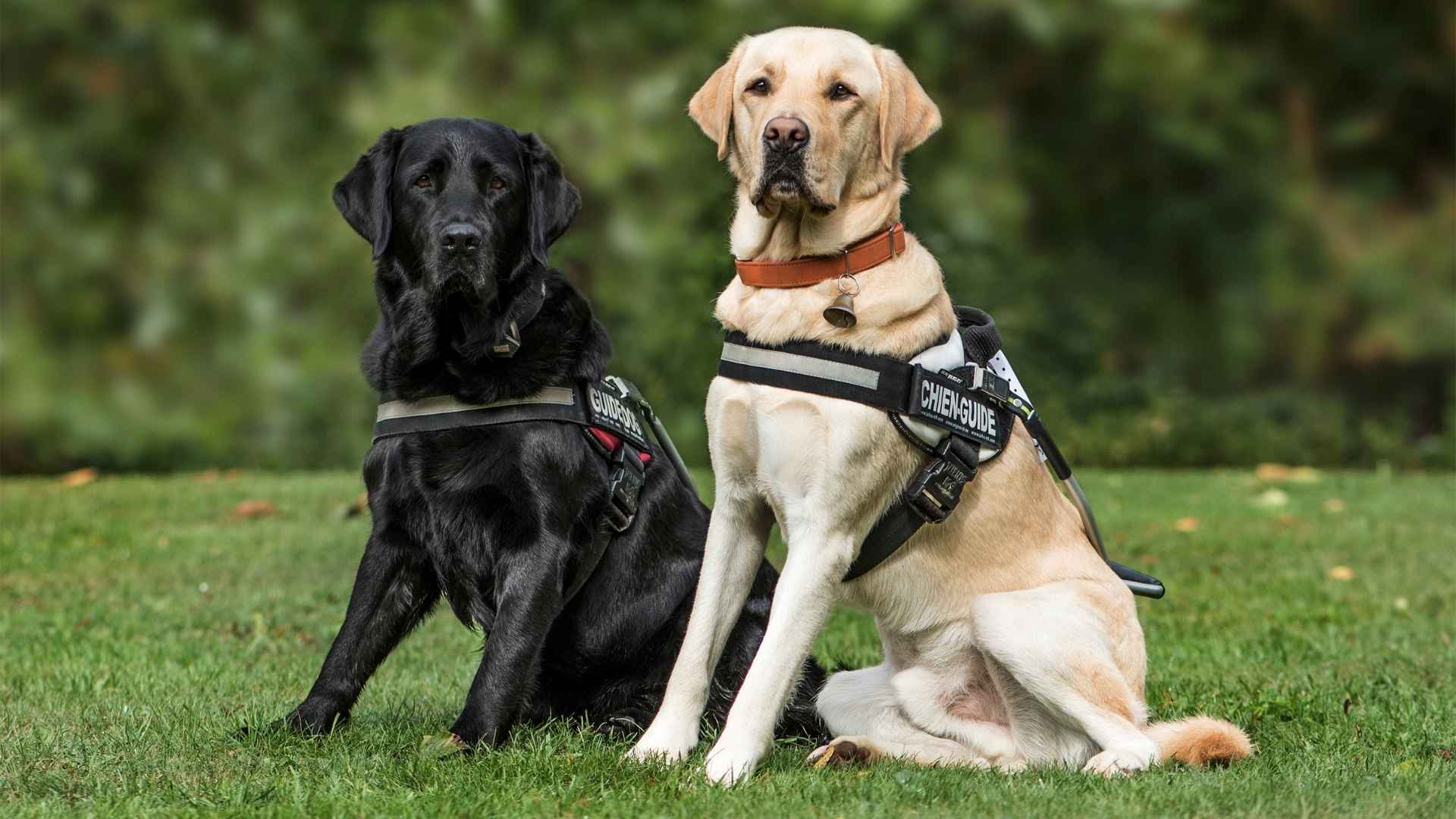Some dogs chase balls — others chase purpose. The most active service dog breeds weren’t bred for lounging or looking pretty; they were built to move, think, and act with intention. These dogs wake up ready to work, and they don’t slow down until the job is done — whether that job is guiding a person through a busy street, detecting a drop in blood sugar, or responding to a silent cry for help.
But their strength isn’t just physical — it’s emotional. These dogs carry more than backpacks or vests. They carry trust, responsibility, and often, someone’s ability to face the world with confidence. With high drive and even higher intelligence, they turn training into instinct and tasks into lifelines.
The seven most active service dog breeds you’re about to meet are more than hardworking — they’re life-changing. Loyal, alert, and always in motion, these dogs don’t just serve — they empower.
Active Service Dog Breeds
1. Labrador Retriever
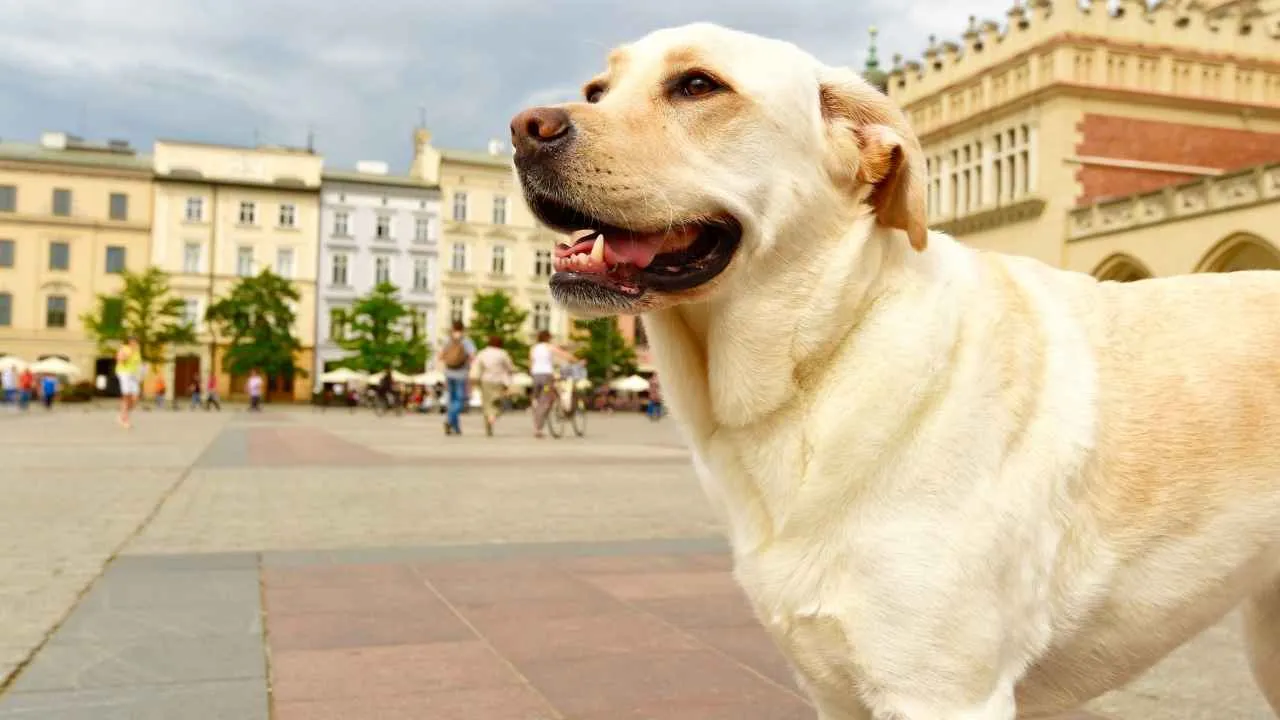
Labrador Retrievers are often the first choice when it comes to good service dogs. These dogs are a perfect blend of energy, intelligence, and friendliness, making them well-suited for various service tasks. Whether they’re assisting people with mobility issues, providing medical alerts, or guiding those with vision impairments.
What sets the Lab apart from other breeds? It’s their balanced energy. They’re not overly hyper, but they’re also not too laid-back. This makes them great for active roles, allowing them to stay engaged with their work while maintaining the focus needed for service duties.
Labs are incredibly smart, which makes training them relatively easy. VCA states that they’re eager to please, which is why they respond so well to positive reinforcement. Whether it’s learning to retrieve items or help someone with physical tasks, Labs excel at picking up commands and mastering new skills.
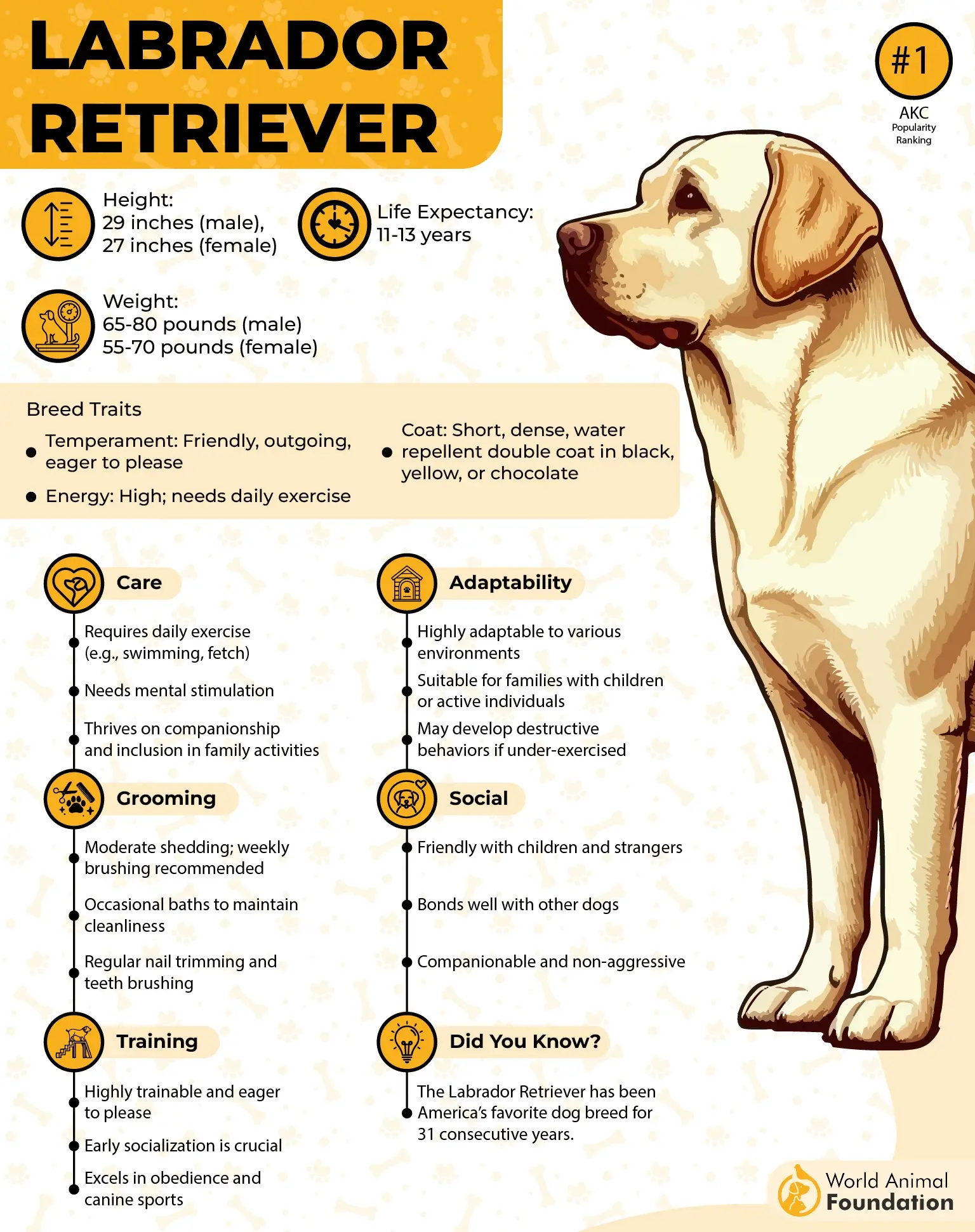
One of the key strengths of a Labrador is their social nature. They love being around people, which makes them ideal for public service dog work. Their friendly and approachable demeanor helps them interact smoothly with strangers, which is especially important when they’re working in crowded or busy environments.
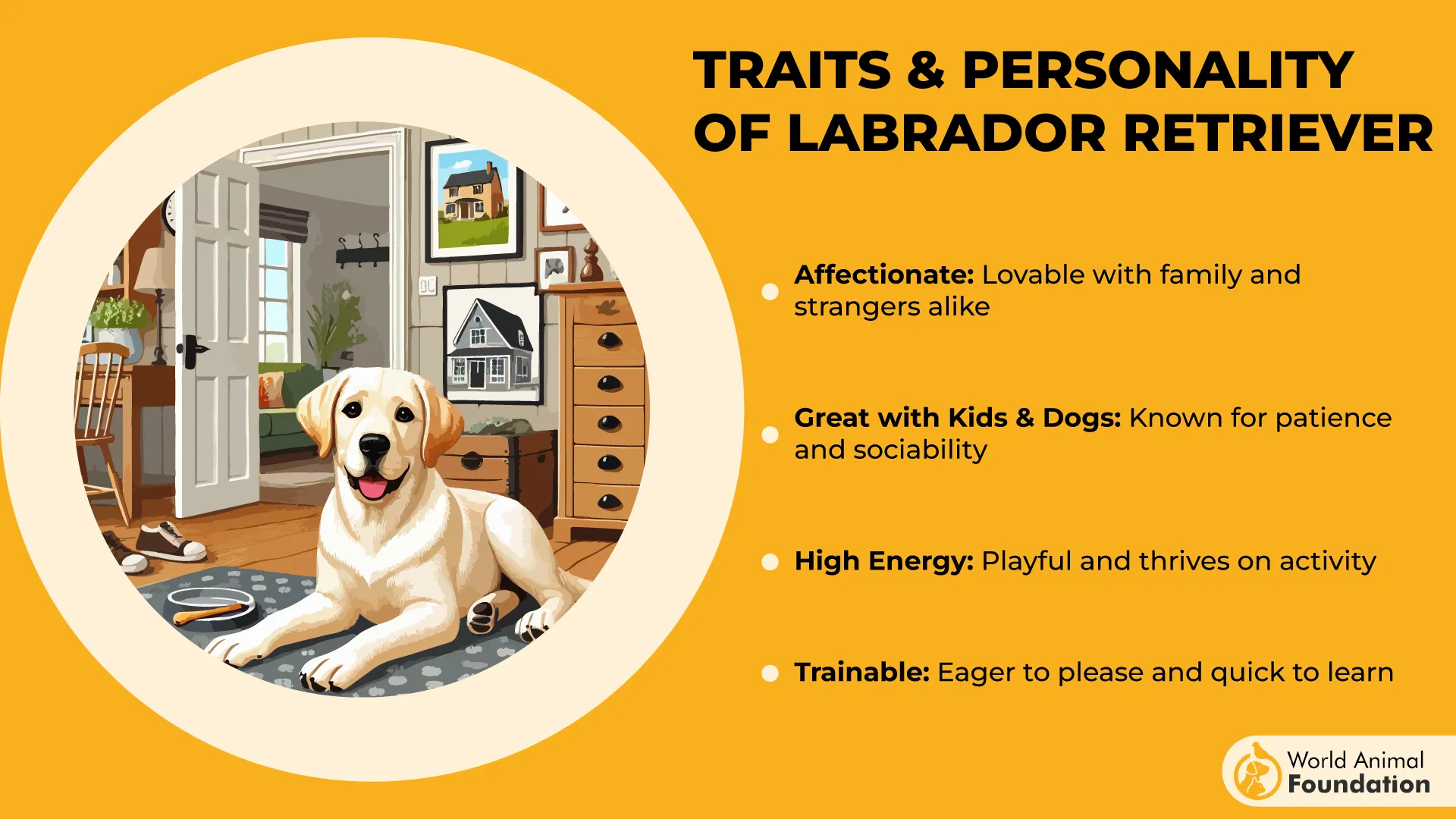
A Lab’s energy isn’t just for work; they also need regular exercise to stay happy and healthy. They enjoy activities like running, swimming, and hiking. This physical activity helps them stay in top shape, ensuring they’re ready to assist when needed. Plus, it gives them an outlet for their energy, which can help keep them focused.
Fun Fact: Did you know that Labrador Retrievers have been the most popular breed in the U.S. for over 30 years? Their blend of intelligence, energy, and loving nature makes them a perfect match for families and service work alike!
2. Golden Retriever
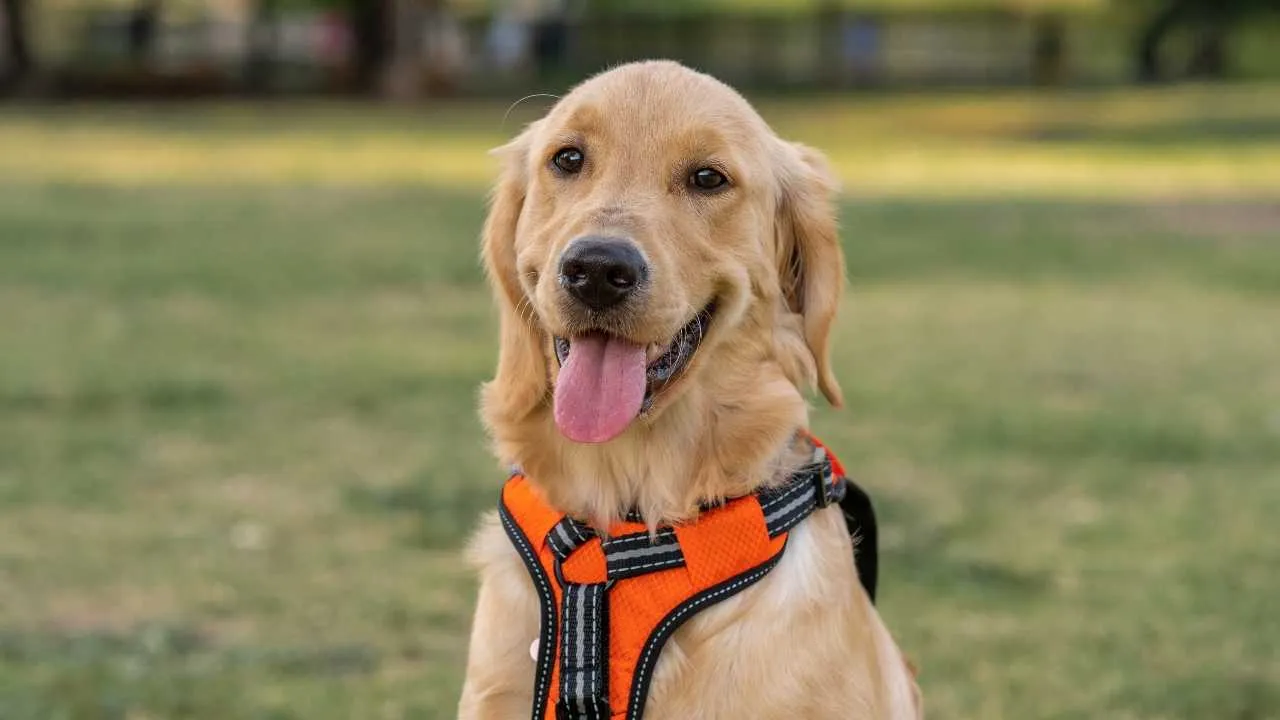
Golden Retrievers are the definition of a versatile, reliable, and popular service dog breed. With their friendly nature and exceptional intelligence, these dogs are often chosen to assist with mobility, medical alert tasks, and emotional support. They are equally adept at guiding those with vision impairments and providing therapy in hospitals or nursing homes.
Their calm yet energetic temperament is perfect for service work, says PDSA. They have a natural ability to adapt to different situations, making them highly effective in varied environments. Their sweet demeanor helps them build a deep connection with their handlers, ensuring that they are not just working dogs but also emotional companions.
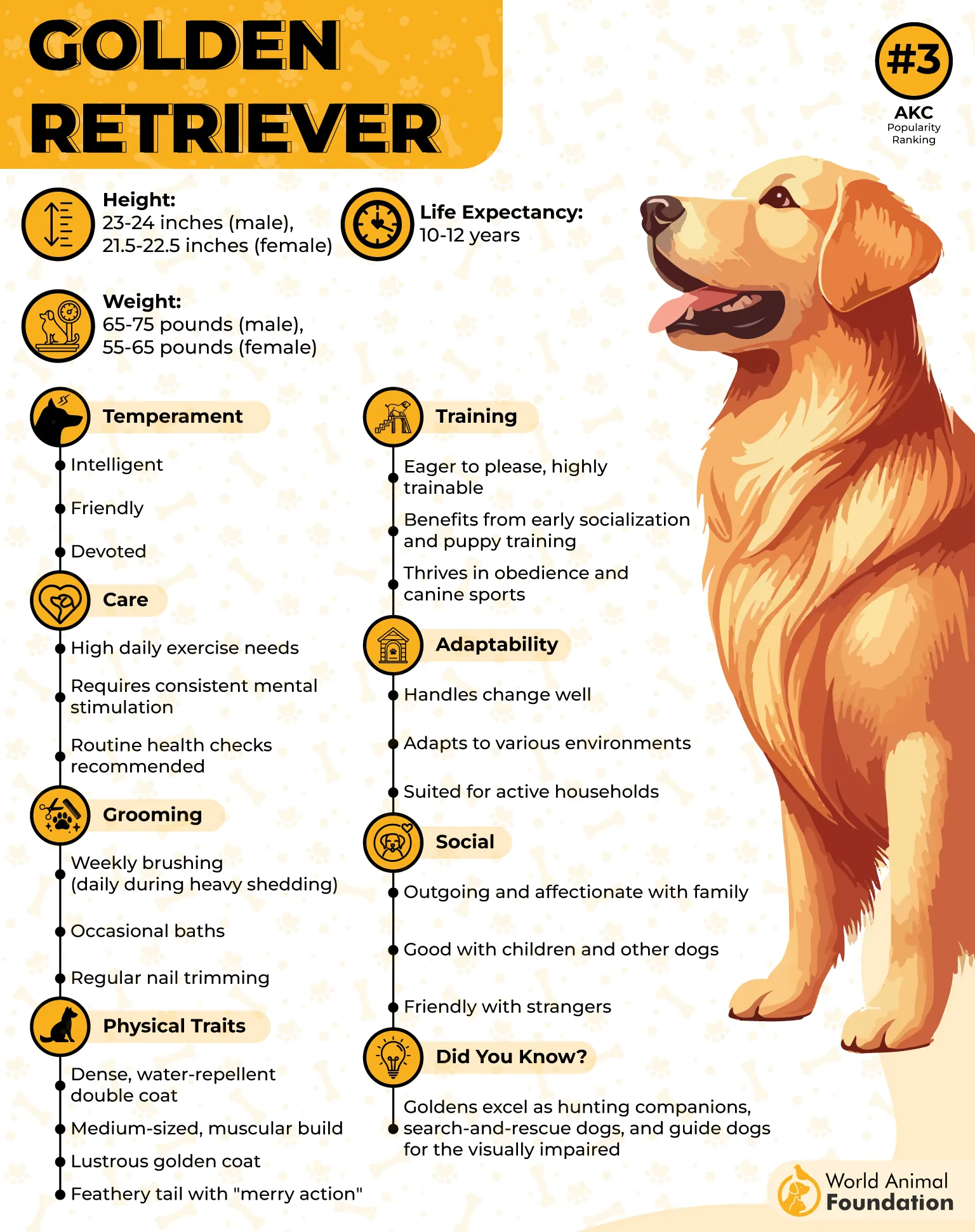
Golden Retrievers are also known for their sensitive nature. These service and therapy dogs are attuned to their handler’s emotions and can provide emotional comfort when needed. This makes them excellent companions for individuals with anxiety or PTSD, as they instinctively know how to offer comfort and security in times of distress.
While they’re known for their friendly nature, Golden Retrievers can also be focused and determined when it comes to their work. They take their service dog duties seriously and are incredibly reliable, ensuring that their handler’s needs are always met with care and precision.
One standout trait of the Golden Retriever is their ability to multitask. Whether it’s assisting with physical tasks, offering emotional support, or providing stability in challenging situations, they can handle multiple roles at once, making them one of the most adaptable service dog breeds.
3. German Shepherd
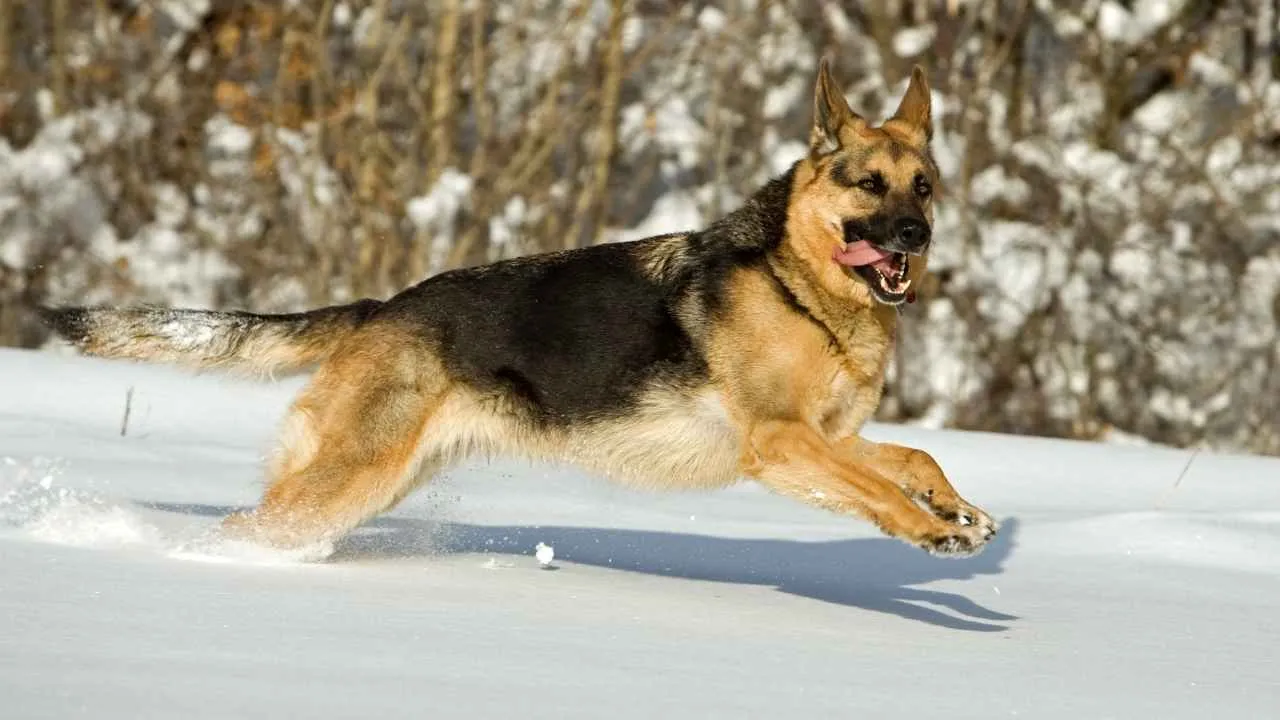
German Shepherds are the epitome of a hardworking service dog. Known for their loyalty and intelligence, these dogs excel in tasks that demand focus and endurance. Whether it’s assisting with mobility or guiding someone with vision impairments, their ability to stay alert and dedicated is unmatched.
What makes them so great at service work? Their drive to work. German Shepherds are not just dogs—they’re partners who take their responsibilities seriously. Always ready to help, they’ll quickly respond to commands and assist with any task, from opening doors to providing physical support.
Physically, they’re built for action. Purina says that German Shepherds are strong, agile, and require regular exercise to stay fit. Whether it’s running, hiking, or agility training, they enjoy being active and need plenty of physical activity to keep them happy and healthy.
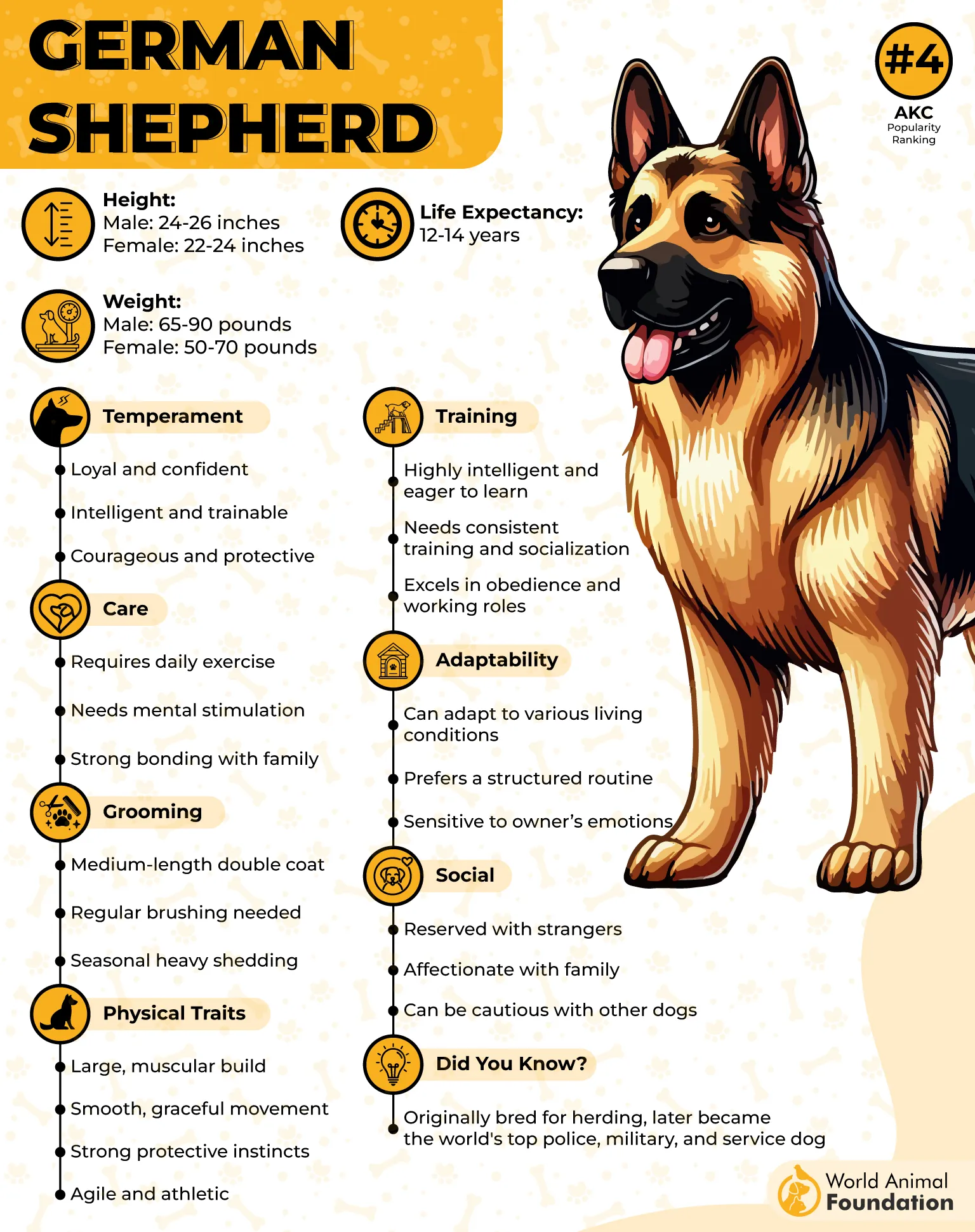
Their protective instincts also make them a great choice for those needing extra security. German Shepherds are naturally watchful and will guard their handler with dedication. But their protection isn’t aggressive—it’s a calm, reliable sense of vigilance that ensures their handler’s safety.
Despite their work-focused nature, German Shepherds are loving companions. They form deep bonds with their families and are affectionate with those they trust. Their balanced temperament means they can switch between being protective and playful.
4. Collie
Collies are the ultimate combination of intelligence, gentleness, and stamina, making them excellent service dogs for those needing emotional support or assistance with mobility. Known for their calm demeanor and incredible focus, Collies are perfect for individuals who need a steady and reliable companion to help navigate daily challenges.
Training a Collie is a rewarding experience. AKC states that they are highly intelligent and eager to please, which makes learning new tasks relatively easy. Whether it’s guiding, fetching items, or providing stability assistance, a Collie can quickly adapt to various roles, making them versatile service dogs.
Their agility and physical strength are key components of their effectiveness. Collies are naturally athletic, and they love engaging in physical activity. While they’re more calm than some breeds, they still thrive on regular exercise, which helps them stay in top shape for work and play.
Unlike some common service dog breeds that may be overly exuberant, Collies are gentle in their approach to service dog work. Their calm and composed demeanor allows them to work well in public settings, providing consistent support without being distracted or overwhelmed by their surroundings.
Their gentle and composed nature makes them reliable partners for people with mobility challenges, offering both physical support and emotional comfort. Their ability to perform multiple roles—be it guiding, fetching, or providing emotional support—makes them incredibly versatile.
5. American Staffordshire Terrier
American Staffordshire Terriers, often known as AmStaffs, may not be the first breed that comes to mind when thinking of service dogs, but their loyalty, strength, and intelligence make them incredible working dogs. AmStaffs are deeply affectionate and form strong bonds with their handlers.
What sets the AmStaff apart from other breeds? Their resilience and determination. Known for their tenacity, these dogs are incredibly persistent when it comes to learning and performing tasks. Whether it’s assisting with mobility or providing comfort in stressful situations, AmStaffs stay focused and committed to their work.
Their strength and physicality make them ideal for service roles that require assistance with mobility. Despite their muscular build, AmStaffs are surprisingly agile and can provide a steady hand (or paw!) when their handler needs it most. They are also capable of helping with balance or providing stability during movements.
CKC says that AmStaffs are incredibly loyal and protective, which makes them excellent companions for individuals who need a dog that can also serve as a guard. Their protective instincts help ensure their handler’s safety, though they’re not aggressive. They simply have a natural desire to keep their loved ones safe.
While their reputation may precede them, AmStaffs prove time and again that their strong, protective nature can be a huge asset in the world of service dogs. With the right training, they become incredibly effective, multi-faceted companions.
6. Poodle
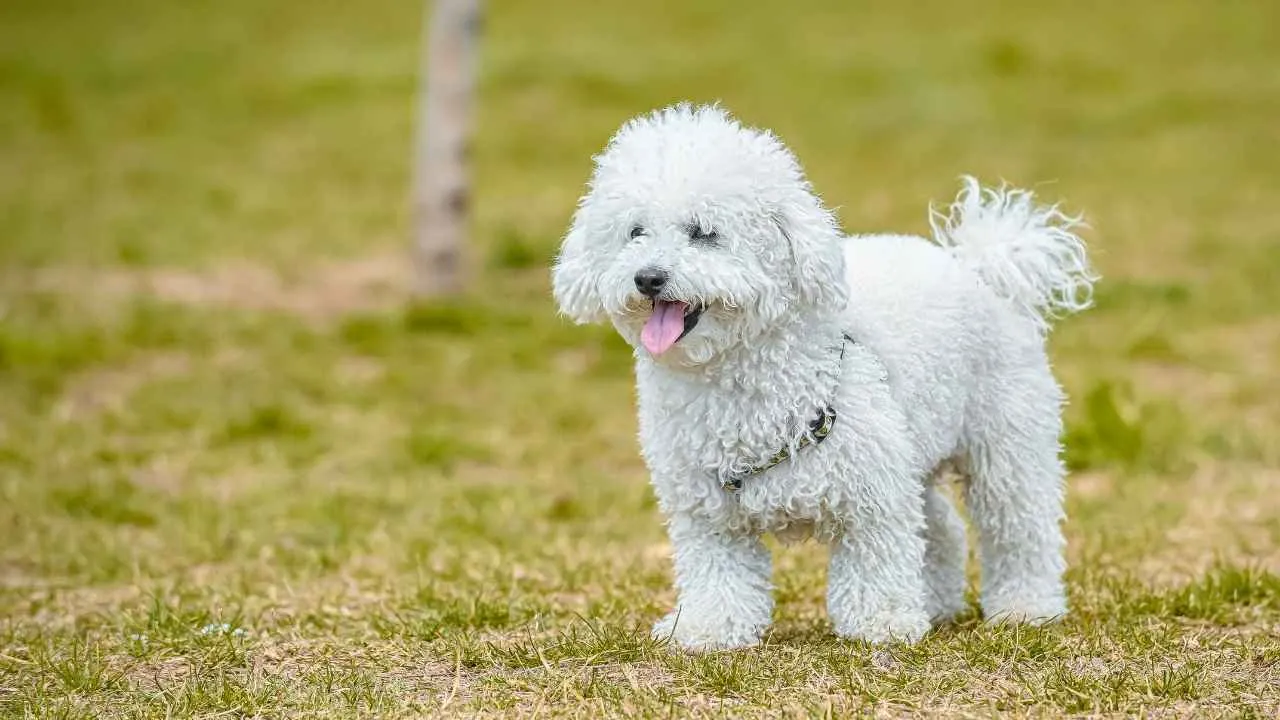
Poodles are often admired for their elegance, but they also excel as great service dogs. Their intelligence, calm nature, and versatility make them ideal for a variety of tasks like mobility assistance, guiding, or emotional support. They’re always up for the job, offering reliable help to those who need it.
What makes Poodles stand out as service dogs? It’s their intelligence, says WebMD. Poodles are among the smartest dog breeds, which makes training them relatively easy. These puppies are quick learners and can master a wide range of tasks, from fetching items to alerting their handlers during medical emergencies or helping people with PTSD.
The Poodle comes in three sizes—standard, miniature, and toy—which makes them versatile enough to serve different roles. The standard Poodle is often used for mobility assistance, while the miniature and toy poodles varieties are perfect for emotional support, especially in smaller living spaces like apartments.
Poodles are also known for their hypoallergenic coats, which is a big advantage for individuals with allergies. Their curly, non-shedding fur reduces the spread of allergens, making them ideal for people who might otherwise have trouble with pet dander but still need a service dog by their side.
Despite their appearance in dog shows, Poodles are hard-working dogs with a strong focus and dedication. They remain calm in busy public environments and stay composed under pressure. Whether they’re assisting their handler in a crowded place or offering support at home, they are always reliable and steady.
7. Border Collie
Border Collies are often regarded as the smartest dog breed, and for good reason. With their sharp minds, boundless energy, and natural drive to work, they are a top choice for active service roles. Whether they’re assisting with mobility, providing support for individuals with autism, or offering emotional help, Border Collies thrive when given a purpose.
Their high energy levels are one of the defining characteristics of the Border Collie. These dogs need both physical and mental exercise to stay happy and healthy. Daily walks, playtime, and even agility training keep them sharp and in peak condition, which is essential for them to perform their service dog duties effectively.
Petplan states that Border Collies are incredibly loyal to their handlers, forming strong emotional bonds. This loyalty ensures they are fully invested in their work, offering consistent support in any situation. They are sensitive to their owners’ emotional state, making them great companions for people with mental health conditions.
In addition to their intelligence and loyalty, Border Collies have a natural instinct to herd. This behavior can be adapted to assist with mobility, helping to guide individuals through crowded spaces. Their focus and work ethic make them reliable in busy environments where precision and attention to detail are essential.
Although they are highly energetic, Border Collies are also very adaptable. They can easily transition from high-energy play to calm, focused work, depending on what’s required. Their versatility allows them to perform a range of tasks, whether it’s providing physical assistance, emotional support, or even serving as a medical alert dog.
Fun Fact: Border Collies are known for their “eye,” a unique, intense gaze they use when herding sheep. This stare is so focused it can make the sheep follow them instinctively!
Conclusion
Active service dog breeds, such as Labrador Retrievers, Golden Retrievers, German Shepherd dogs, and even Border Collies, have proven to be exceptional companions for people with a wide range of needs. These breeds are trained specifically to perform service work, whether it’s as guide dogs for the visually impaired, hearing dogs for the hearing impaired, or as psychiatric service dogs for individuals with mental disabilities.
It’s important to remember that not all dogs are cut out for service dog training. The right dog must have the temperament and intelligence to perform tasks like retrieving objects, opening doors, or offering psychiatric support. While popular purebred dogs like Bernese Mountain Dogs, Cocker Spaniels, and Poodles excel in service dog work, mixed breeds can also make excellent service dogs when trained appropriately. With extensive training, these dogs can help people manage mobility issues, assist in treatment plans, and provide critical support in everyday life.
Ultimately, choosing the right service dog breed depends on your specific needs. Whether you need a medium size dog like a Cocker Spaniel or a large breed like a Great Dane, the goal is to find a dog with the right temperament and energy to provide reliable support. Service animals, like these intelligent and dedicated dogs, help their owners live more independently, making them invaluable companions in both physical and emotional support roles.at the forefront of offering support and performing vital specific tasks.


